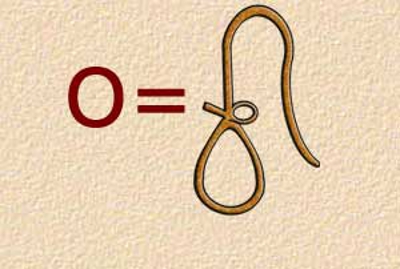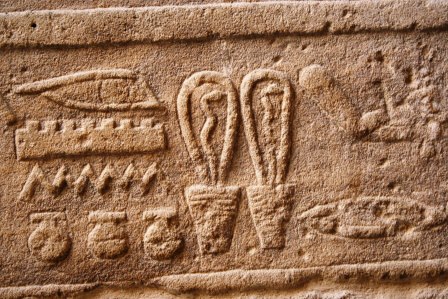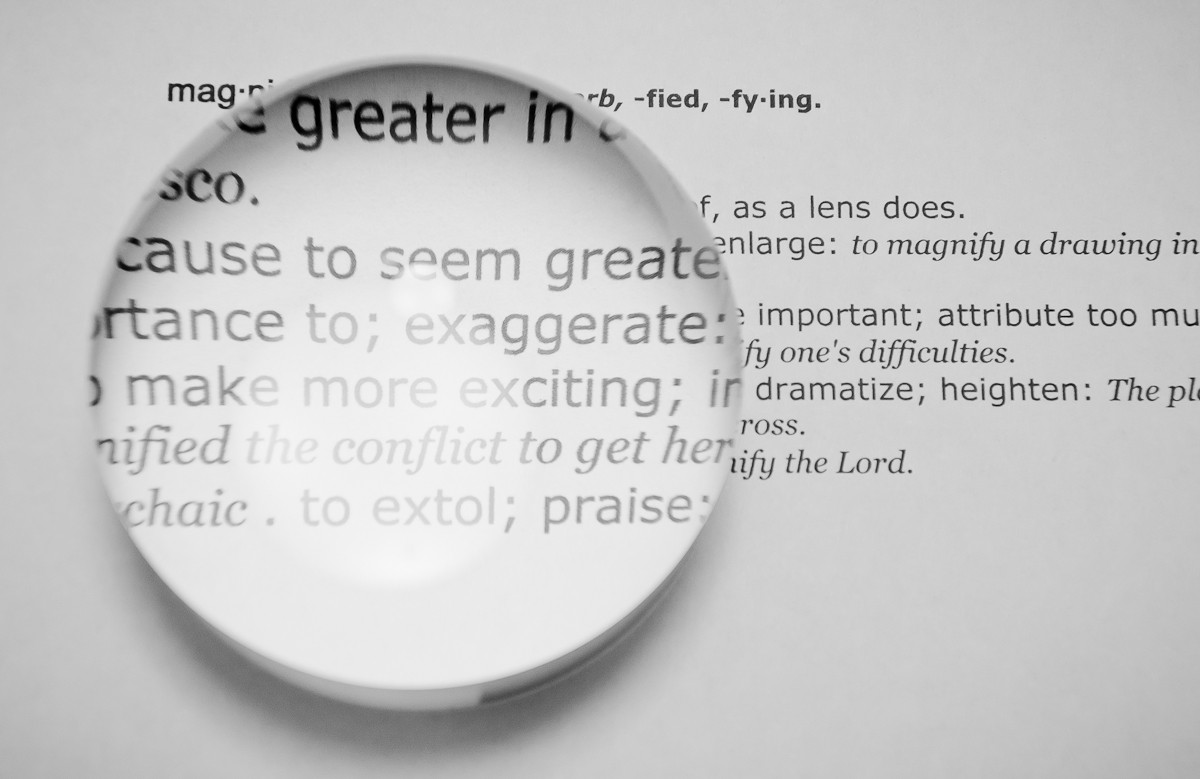It looks like you're using an Ad Blocker.
Please white-list or disable AboveTopSecret.com in your ad-blocking tool.
Thank you.
Some features of ATS will be disabled while you continue to use an ad-blocker.
share:
cosmikDebris
After thumbing through many more relief photos I've yet to see that symbol again. You would think that, if it were a symbol rather than an artists depiction of sperm, it would have to be repeated somewhere else on the walls of Luxor Temple.
We know with relative certainty that Egyptians didn't have microscope technology (that being said there are A LOT of things regarding ancient peoples that we are "certain" about that are being debunked on a regular basis), so where else in nature could they have possibly given an idea of what human sperm could look like? Tadpoles?
Ancient Egyptians were capable of making transparent glass:
en.wikipedia.org...
Knowledge of lens goes back to 2620BC
www.ncbi.nlm.nih.gov...
you mean im the only poster on topic on the whole thread?
lol
eeep! dogs and cats living together...world should end by noon...
School of Optometry, University of California, Berkeley, USA
pendientedemigracion.ucm.es...
i think this is pretty conclusive as a ref to the fact the egyptians had magnification
mirrors and lenses can magnify, as can oil in a wire hoop, or ring, and even bubbles can be used as magnifiers
or just maybe giant gods have giant...titanic...
eta darn you beat me by a couple years Storm....good one
lol
eeep! dogs and cats living together...world should end by noon...
INTRODUCTION TO THE HISTORY OF LENSES
AND VISUAL CORRECTIONS
ABSTRACT
Archaeological optics is a branch of science studying the early history of lenses, optical devices and
introduction of visual corrections from ancient civilizations up to our modern world. The first known lenses
were located in Egypt, (ca 2600 BC). There are well documented studies of discoveries adressing the early
use of corrective lenses.
...The first known lenses have been located in Egypt (ca 4630 BP: Before the Present time); later lenses
were encountered at other sites in the Middle East and the Greek Islands [2]. Mirror use can be traced
back 8000 BP in Anatolia (located in south-central modern Turkey). Mirrors latter appeared in Egypt
and Mesopotamia.
Early optical discoveries on the American continent occurred remarkably early and are only poorly
documented. By about the year 4000 BP (2000 BC) mirrors appeared broadly throughout the Middle
East, Greece and Etruria, Asia and China, and surprisingly in the New World. Mirrors in Western
Asia, Egypt and in Eastern Mediterranean areas
School of Optometry, University of California, Berkeley, USA
pendientedemigracion.ucm.es...
i think this is pretty conclusive as a ref to the fact the egyptians had magnification
mirrors and lenses can magnify, as can oil in a wire hoop, or ring, and even bubbles can be used as magnifiers
or just maybe giant gods have giant...titanic...
edit on Satam3b20143America/Chicago34 by Danbones because: (no reason given)
eta darn you beat me by a couple years Storm....good one
edit on Satam3b20143America/Chicago34 by Danbones because: (no reason given)
edit on Satam3b20143America/Chicago16 by Danbones
because: (no reason given)
This image...still thinking about it...
I can't help but see a spermatazoa with a number 9 laying on its back, right where the head and tail meet.
I am not suggesting a mnemonic connection to obvious connotation to the letter O in the English language. But I would presume that they ascribed a pictograph to a sound. And I would assume a relational aspect of that in some way.
I am curious about the background of how that pictographic symbol came to represent the "O" sound. I wouldn't mind digging through data on my own, either. Is there text on etymology of hieroglyphics? Any searches I do either want to give me the same information for Greek letters, or define the word "hieroglyphic"
I guess I should add: the number 9 has multiple connections to high import. All numbers are "very holy". 9 represent man. It is the center of the circle (9+1=10, with 10 being the divine number...complete, whole, the closed circle). 3 is the holy trinity, the triad, the obvious result of the interaction of self and other (monad/duad....1/2). 9, however, represent 3 to the power of 3. It is the holy trinity, in trinity. I am aware that the Egyptians may not have used that symbol as a numeric 9. But symbols from teh ancient world tend to be interconnected, borrowed, repurposed, etc. The 9 symbol would have a meaning in Egypt, whether esoteric or not. I wonder what that symbol itself means (the "9") as an element in that image.
I can't help but see a spermatazoa with a number 9 laying on its back, right where the head and tail meet.
I am not suggesting a mnemonic connection to obvious connotation to the letter O in the English language. But I would presume that they ascribed a pictograph to a sound. And I would assume a relational aspect of that in some way.
I am curious about the background of how that pictographic symbol came to represent the "O" sound. I wouldn't mind digging through data on my own, either. Is there text on etymology of hieroglyphics? Any searches I do either want to give me the same information for Greek letters, or define the word "hieroglyphic"
I guess I should add: the number 9 has multiple connections to high import. All numbers are "very holy". 9 represent man. It is the center of the circle (9+1=10, with 10 being the divine number...complete, whole, the closed circle). 3 is the holy trinity, the triad, the obvious result of the interaction of self and other (monad/duad....1/2). 9, however, represent 3 to the power of 3. It is the holy trinity, in trinity. I am aware that the Egyptians may not have used that symbol as a numeric 9. But symbols from teh ancient world tend to be interconnected, borrowed, repurposed, etc. The 9 symbol would have a meaning in Egypt, whether esoteric or not. I wonder what that symbol itself means (the "9") as an element in that image.
edit on 3/22/2014 by bigfatfurrytexan because: (no reason given)
stormcell
Ancient Egyptians were capable of making transparent glass:
en.wikipedia.org...
Knowledge of lens goes back to 2620BC
www.ncbi.nlm.nih.gov...
Thats pretty good. Makes more sense to me than some of the previous explanations.
Kantzveldt
reply to post by abeverage
Hey what are these spermatoza doing in light bulbs!
The relationship of the Atum serpent to the lily bulb maybe? Mind you if the Egyptians did have light bulbs powered by clay pot batteries they would have understood these as representing the light bringing Atum that gave rise to Ra who illuminates, and his serpentine aspect would make a lovely filament, so not necessarily a case of one or the other interpretation.
Wake up and smell the water Lily
reply to post by Danbones
The serpent relating to the Lily no?edit on Kpm33179vAmerica/ChicagoFriday2131 by Kantzveldt because: (no reason given)
Part of one of the Horus myths, repeated at the more famous (or infamous, I guess) Temple of Hathor in Dendera, though the artwork - being Ptolemaic - differs somewhat.
Myth (somewhat) explained on these pages.
Doodle19815
reply to post by Skyfloating
The item right under the eye might resemble a....
Your "item" is an extremely common glyph and can be seen all over the posted relief carving, as well as anywhere else in Egypt where hieroglyphs are present.
133CF 𓏏 EGYPTIAN HIEROGLYPH X001
• transliterated as t
Unicode version - the glyph can't paste in. See here, scroll down to the page that is marked 133B8 in the top left corner.
EDIT: Also, see page one of this hieroglyphic dictionary, which starts with the "alphabet" of ancient Egypt.
Harte
edit on 3/22/2014 by Harte because: I said so.
reply to post by Harte
This is the best article on The Denderah Light Bulb
What is surprising about the iconography there and why it is without precedent in Ancient Egypt is the ordering of the symbolism, the component aspects are all well attested, but the rebirth of the Atum serpent would normally take the order of manifestation of Khepri the black scarab born within the Lily, then the emergence of Nefer-Atum, his receiving of the eye of Horus and thus achieving the status of Horus reborn, and then rising in the glory of Ra, so it isn't the serpent that should be seen to emerge from the Lily, even though everyone that does would still have been understood as an aspect of Atum.
Also emergence from the Lily in this sense of birth would really have to be departure from the suggested womb of Nut, not an entering into it, which is what the explanation is suggesting is occurring.
This is the best article on The Denderah Light Bulb
Although the temple dates to the late Ptolemaic period and was built by Greeks, the builders used the Egyptian symbolism and world view. Also interesting is an architectural element found on every passage to a group of crypts: a band of inscriptions explaining the usage of the rooms. The two southern "lamp" crypts are, according to the text, "Secluded rooms of the statues of the house of Somtus." Somtus is the Greek rendition of the ancient Egyptian god /smA tA.wy/ Sema Tawy - "Uniter of the Two Lands" to whom the crypts were dedicated to. Somtus is the god of the Unity of the Two Lands, known from the Old Kingdom on but he didn't play a great role until the late New Kingdom. Then he emerges as Harsomtus Hr smA tAwy /Hr smA tA.wy/ Har Sema Tawy - "Heru, Uniter of the Two Lands" a personification of the sky, and as Resomtus /ra smA tA.wy/ Ra Sema Tawy, the personification of the sun, especially the new, rising sun. This last form was preferred in Dendera, he is often shown as snake
What is surprising about the iconography there and why it is without precedent in Ancient Egypt is the ordering of the symbolism, the component aspects are all well attested, but the rebirth of the Atum serpent would normally take the order of manifestation of Khepri the black scarab born within the Lily, then the emergence of Nefer-Atum, his receiving of the eye of Horus and thus achieving the status of Horus reborn, and then rising in the glory of Ra, so it isn't the serpent that should be seen to emerge from the Lily, even though everyone that does would still have been understood as an aspect of Atum.
Also emergence from the Lily in this sense of birth would really have to be departure from the suggested womb of Nut, not an entering into it, which is what the explanation is suggesting is occurring.
edit on Kam33180vAmerica/ChicagoSaturday2231 by Kantzveldt because: (no reason given)
reply to post by Harte
So a loosely translated version of this may be, "See the Water Of Life as my offering. Bring the waters in abundance."
And by the way, whoever translates this stuff is NUTS! (In a good way for spending countless hours trying to come up with what it all means.)
So as Harte pointed out, my little "magnifier" is the letter t in Egypt language. However, when paired with an eye, it means eye. So are they saying they can see with this "magnifier"?

(Harte, I know I am going to drive you bonkers with this theory, but I am throwing it out there anyhow.)
So a loosely translated version of this may be, "See the Water Of Life as my offering. Bring the waters in abundance."
And by the way, whoever translates this stuff is NUTS! (In a good way for spending countless hours trying to come up with what it all means.)
So as Harte pointed out, my little "magnifier" is the letter t in Egypt language. However, when paired with an eye, it means eye. So are they saying they can see with this "magnifier"?

(Harte, I know I am going to drive you bonkers with this theory, but I am throwing it out there anyhow.)
edit on 22-3-2014 by Doodle19815
because: (no reason given)
reply to post by Skyfloating
Wikipedia: Conflict Between Horus and Set
Wow... that is one dirty conflict. I was doing research on the subject. Maybe this is what the hieroglyphs are depicting in some cases. Could give more keywords for a Google Search. Also, verifying this particular Wikipedia entry... brb.
It seems legitimate.
According to Papyrus Chester-Beatty I, Set is depicted as trying to prove his dominance by seducing Horus and then having intercourse with him. However, Horus places his hand between his thighs and catches Set's semen, then subsequently throws it in the river, so that he may not be said to have been inseminated by Set.
Horus then deliberately spreads his own semen on some lettuce, which was Set's favorite food. After Set had eaten the lettuce, they went to the gods to try to settle the argument over the rule of Egypt. The gods first listened to Set's claim of dominance over Horus, and call his semen forth, but it answered from the river, invalidating his claim. Then, the gods listened to Horus' claim of having dominated Set, and call his semen forth, and it answered from inside Set.[19][20]
Wikipedia: Conflict Between Horus and Set
Wow... that is one dirty conflict. I was doing research on the subject. Maybe this is what the hieroglyphs are depicting in some cases. Could give more keywords for a Google Search. Also, verifying this particular Wikipedia entry... brb.
It seems legitimate.
edit on 22amSat, 22 Mar 2014 08:31:09 -0500kbamkAmerica/Chicago by darkbake because: (no reason given)
reply to post by bigfatfurrytexan
I agree and I think its obvious why they choose the 9th number to represent man, shape aside, the number 9 is probaby one of the most amazing and versatile numbers there are, you should play about with it and the strange synchronicities it has, such as every number in the 9 times table adds back up to 9,
9,18,27,36,45 etc, 1+8=9, 2+7=9, 3+6=9 and so on, no matter how far you go... And also if you take a piece of paper and write 0-9 going up the way, so,
9
8
7
6
5
4
3
2
1
0
Then you do the same going the opposite way,
0
1
2
3
4
5
6
7
8
9,
Put or draw those two lines next to each other and you have ??? The nine times table.... Strange eh? No other number does that, no other creature can do what Man can, so it seems a good representation or likeness, if you see what I mean.
There are many more amazing things about this number, like that anything added to it adds back up to itself, 9+5=14, 1+4=5 again... 9+8=17, 1+7=8 again...
I agree and I think its obvious why they choose the 9th number to represent man, shape aside, the number 9 is probaby one of the most amazing and versatile numbers there are, you should play about with it and the strange synchronicities it has, such as every number in the 9 times table adds back up to 9,
9,18,27,36,45 etc, 1+8=9, 2+7=9, 3+6=9 and so on, no matter how far you go... And also if you take a piece of paper and write 0-9 going up the way, so,
9
8
7
6
5
4
3
2
1
0
Then you do the same going the opposite way,
0
1
2
3
4
5
6
7
8
9,
Put or draw those two lines next to each other and you have ??? The nine times table.... Strange eh? No other number does that, no other creature can do what Man can, so it seems a good representation or likeness, if you see what I mean.
There are many more amazing things about this number, like that anything added to it adds back up to itself, 9+5=14, 1+4=5 again... 9+8=17, 1+7=8 again...
edit on ESaturday4622am0823 by Elijah23 because: (no reason given)
reply to post by Elijah23
Yes, well that is a good example you typed out there.
However, I don't think that their "9" and our 9 looked anything alike. So I don't think what is depicted is the number 9 at all.
I am still waiting for a good answer to BFFT's question though......
Yes, well that is a good example you typed out there.
However, I don't think that their "9" and our 9 looked anything alike. So I don't think what is depicted is the number 9 at all.
I am still waiting for a good answer to BFFT's question though......
darkbake
Horus then deliberately spreads his own semen on some lettuce, which was Set's favorite food.
Hilarious feud. Sounds like a teenager prank.
@Harte: Thanks for clarifying the symbol above the sperm.
reply to post by Elijah23
And it is also known as the 'double cube':
1+3+5=9
2+3+4=9
Although numerology isn't the topic....the shape of the number 9 is a part of the glyph for "O". It looks like a spermatozoa with a 9 laying on its neck.
As mentioned, I am not suggesting that they used the same characters for numbers or anything. But our numbers derive from that region....so i wonder if there is a relational aspect with that glyph.
And it is also known as the 'double cube':
1+3+5=9
2+3+4=9
Although numerology isn't the topic....the shape of the number 9 is a part of the glyph for "O". It looks like a spermatozoa with a 9 laying on its neck.
As mentioned, I am not suggesting that they used the same characters for numbers or anything. But our numbers derive from that region....so i wonder if there is a relational aspect with that glyph.
reply to post by FlyersFan
blood under the microscope looks like a universe.
it is incredible.
as for sperm and the Pharaoh; that connotation is starting to sound like something from the Kamasutra.
perhaps just like other People around the globe they had a joy of sex?
blood under the microscope looks like a universe.
it is incredible.
as for sperm and the Pharaoh; that connotation is starting to sound like something from the Kamasutra.
perhaps just like other People around the globe they had a joy of sex?
reply to post by Skyfloating
I have only read the op so I'm sure this has been said, but its a jar of liquid being spilled not a sperm
I have only read the op so I'm sure this has been said, but its a jar of liquid being spilled not a sperm
I am the poster that mentioned the tour guide showing me the image of the Pharaoh ejaculating at Luxor temple. As well as the image that you have
found I have an image of a second depiction of the sperm within the temple.i will post the images here. the first is a picture of the relief in
general and the second is a close up of the area showing the sperm. The Sperm itself can be seen in the second image just left of centre at the top
of the image
[snipped]


[snipped]
edit on Sat Mar 22 2014 by DontTreadOnMe because: images removed


edit on 22/3/2014 by avriel because: edit to include thumbnails of images and not full images
reply to post by LUXUS
I think when you read the thread, you will see the meaning of "The water of life" connotation.
I think when you read the thread, you will see the meaning of "The water of life" connotation.
reply to post by bigfatfurrytexan
I get what you're saying, but if they used the same symbol and said it represented man Because of those qualities then in a way, numerology is the subject. It's all numbers mate... Everything... "all is number, number is all" and the numbers that the high priests used were very much like ours... Some of them were, then by the babylonians, then the sufis, then the Arabs and then us.
I get what you're saying, but if they used the same symbol and said it represented man Because of those qualities then in a way, numerology is the subject. It's all numbers mate... Everything... "all is number, number is all" and the numbers that the high priests used were very much like ours... Some of them were, then by the babylonians, then the sufis, then the Arabs and then us.
reply to post by Elijah23
and that is the meat of my question. Is there a source for etymology of characters? I can find a translation table...I think harte linked one up. But how did those characters come to be. They are pictographic, meaning they obviously are intended as a representational form of writing. I would suspect the etymology would go in that direction.
and that is the meat of my question. Is there a source for etymology of characters? I can find a translation table...I think harte linked one up. But how did those characters come to be. They are pictographic, meaning they obviously are intended as a representational form of writing. I would suspect the etymology would go in that direction.
LUXUS
I have only read the op so I'm sure this has been said, but its a jar of liquid being spilled not a sperm
Are you sure you looked at the picture in the OP? Its been removed by the Mods so there will be a link to click. The liquid is coming directly out of his....well, I dont want this post to get removed, so I`ll say this much: Its coming straight out of his body, not out of a jar.
new topics
-
Watch as a 12 million years old Crab Emerges from a Rock
Ancient & Lost Civilizations: 4 minutes ago -
ILLUMINATION: Dimensions / Degrees – Da Vincis Last Supper And The Philosophers Stone
Secret Societies: 6 hours ago -
Just Sick of It! Done! Can't take it anymore!
General Chit Chat: 7 hours ago -
Speaking of Pandemics
General Conspiracies: 9 hours ago -
Stuck Farmer And His Queue Jumping Spawn
Rant: 9 hours ago
top topics
-
Paradox of Progress
Ancient & Lost Civilizations: 17 hours ago, 8 flags -
Speaking of Pandemics
General Conspiracies: 9 hours ago, 8 flags -
ILLUMINATION: Dimensions / Degrees – Da Vincis Last Supper And The Philosophers Stone
Secret Societies: 6 hours ago, 7 flags -
Just Sick of It! Done! Can't take it anymore!
General Chit Chat: 7 hours ago, 5 flags -
Stuck Farmer And His Queue Jumping Spawn
Rant: 9 hours ago, 4 flags -
Watch as a 12 million years old Crab Emerges from a Rock
Ancient & Lost Civilizations: 4 minutes ago, 0 flags
active topics
-
DONALD J. TRUMP - TIME's Most Extraordinary Person of the Year 2024.
Mainstream News • 57 • : xuenchen -
Musk calls on King Charles III to dissolve Parliament over Oldham sex grooming gangs
Mainstream News • 155 • : Oldcarpy2 -
Winter Storm
Fragile Earth • 28 • : RazorV66 -
Watch as a 12 million years old Crab Emerges from a Rock
Ancient & Lost Civilizations • 0 • : gortex -
-@TH3WH17ERABB17- -Q- ---TIME TO SHOW THE WORLD--- -Part- --44--
Dissecting Disinformation • 3934 • : Thoughtful3 -
Just Sick of It! Done! Can't take it anymore!
General Chit Chat • 10 • : JJproductions -
Paradox of Progress
Ancient & Lost Civilizations • 9 • : ADVISOR -
Paranoid Liberals Believe U.S. Service Members are More Dangerous than Illegal Aliens.
Social Issues and Civil Unrest • 48 • : ADVISOR -
Orbs Appear And Form Triangle On Live Cam.
Aliens and UFOs • 27 • : Myhandle -
Candidate Harris Supporter MARK CUBAN Says Trump Has No Smart-Intelligent Women in His Orbit.
2024 Elections • 78 • : Oldcarpy2



